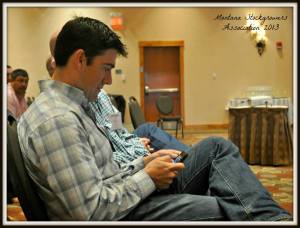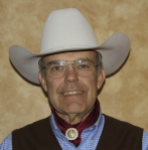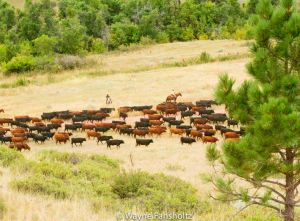The following is a special guest post from Walker Milhoan, a Collegiate Stockgrowers member at the University of Montana in Missoula. Walker attended the recent Ranch Sustainability Forum with the Padlock Ranch near Sheridan, Wyoming. His presentation covered technology to be used on the ranch and we believe it’s very valuable insight for the ranching community.
 Last week my colleague Jen Livsey and I were fortunate enough to have the opportunity to present at the First Annual Ranch Sustainability Forum in Sheridan, Wyoming. Jen and I presented on behalf of our newly minted company, RanchHacks.com, and we covered the topic of how technology can help streamline productivity on the ranch. The event was successful and our presentation drew more interest than we had anticipated.
Last week my colleague Jen Livsey and I were fortunate enough to have the opportunity to present at the First Annual Ranch Sustainability Forum in Sheridan, Wyoming. Jen and I presented on behalf of our newly minted company, RanchHacks.com, and we covered the topic of how technology can help streamline productivity on the ranch. The event was successful and our presentation drew more interest than we had anticipated.
The three day forum focused on ranch sustainability with the overarching goal of defining (in broad terms at this point) just what that means. This topic means lots of things to lots of different folks but the general consensus is that there are three pillars to a sustainable ranching operation: Profit, People, and Planet. Without profitability no business is successful in the long run. Without good people, the business will most likely suffer and eventually fail. And, without a healthy planet, your operation will certainly grind to a halt at some point in the future.
This is where our technology presentation comes into play. First, technology can’t and won’t solve all the problems on your ranch. However, technology can help you manage your finances better, leading to more profitability. Technology can help you improve communications with your people, leading to increased productivity and eventually higher profitability. Technology can also help you manage your resources better (planet), leading to healthier soils, better forages, and happier animals, and you know where this goes — happy cattle grow better, potentially adding more profit to your bottom line.
There are three web-based (meaning you can access them from your computer, your phone, or your iPad) software applications that can help you move towards these three pillars of success: Google Drive, Evernote, and Trello. The breadth of these applications could easily turn this short write-up into something akin to War and Peace, so I will briefly touch on how each one can help your ranching entity. Also, if you readers out there have any questions, please feel free to email me at [email protected] and I will be willing to help you in any way.
So without further adieu, here are the three productivity apps in no particular order:
Google Drive – This is a FREE office management suite that allows users to seamlessly collaborate on spreadsheets, documents, and presentations. It has amazing features like HelloSign that allow you to digitally sign legally binding documents without having to download and fax them. You can build spreadsheets in real-time with up to 50 different people from anywhere in the world, on any device. You can collaborate on word documents with up to 200 people at the same time! The point that I’m trying to make here is that Google Drive is perfect for organizations who have employees/members who all live in different places that are very far away from each other.
Evernote – This is also a FREE software application that allows you to collect, store, and easily find anything in your life. The best use we have found for the ranching community is Evernote’s ease of collecting and managing receipts. Here is an example: your employee just signed off on a large purchase from the supply store and they have the receipt in hand. The employee needs to get this receipt to the accountant but he still has hours of work ahead and it’s raining. With Evernote, he can take a picture of the receipt and “tag” it with “Fencing Supplies.” The accountant can then easily access the receipt in Evernote by performing a general search for the price, the name, or the tag. What this means in layman’s terms is this: the accountant (in Billings) will have the receipt on their desk in the same amount of time as is takes the employee (in Miles City) to snap a picture of it on his smartphone.
Trello – Wow, FREE again! Trello is the best “to-do” list on the face of the earth! Trello is very robust, but to simplify, we have found that using it as a “to-do” list is the most practical application for ranchers, and the best feature is there are already three columns created for you: To-do, Doing, Done. Users can add “cards” to these columns, and within the cards you can add checklists, photos, documents and spreadsheets. You can then assign someone (via their email address) to a chore or task and they can access it on their phone, iPad or computer. This is perfect when you send an employee to town with a list of items to pick up from the hardware store and then realize that you forgot to add an item to the list. You simply add the item on the go and it’s automatically added to their list too!
Ok, if you are still reading this, thank you! If what you are reading comes across as Japanese (in other words totally foreign and confusing) then like I mentioned before, please email me at [email protected] and I will be glad to help you navigate the digital spiderweb.















